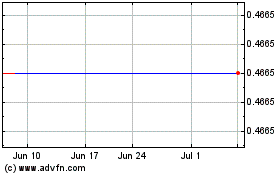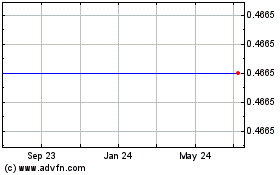VIVUS Completes Enrollment in Phase 4 Safety and Efficacy Study of Qsymia® in Adolescents
March 02 2020 - 7:30AM

VIVUS, Inc. (Nasdaq: VVUS; the “Company”), a biopharmaceutical
company, today announced the completion of patient enrollment in a
Phase 4 clinical study designed to evaluate the safety and efficacy
of Qsymia
® (phentermine and topiramate
extended-release) capsules CIV in adolescents between the ages of
12 and 17 years who are obese (NCT# 03922945).
“Completing enrollment in this study is an
important milestone in our ongoing efforts to expand the clinical
use of Qsymia based on robust safety and efficacy data,” said
Santosh T. Varghese, MD, Senior Vice President, Chief Medical
Officer at VIVUS. “The enthusiasm among clinicians,
adolescent patients and their parents for participating in this
study reflects the unmet need for new medical treatments that
safely and effectively address the challenges of obesity in this
patient population.”
The Centers for Disease Control and Prevention
estimates that nearly 21 percent of adolescents ages 12 to 19 years
in the United States are obese.1 A study conducted by the
World Health Organization found that obesity in children ages five
to 19 years has risen ten-fold in the past four decades and
estimates that more children globally will be overweight rather
than underweight by 2022.2
“We believe that Qsymia has significant clinical
and commercial potential, and we are committed to capturing a
larger share of the global market for anti-obesity medications,”
said John Amos, Chief Executive Officer at VIVUS. “Expanding
the body of clinical evidence supporting the safety and efficacy of
Qsymia in diverse patient populations and clinical settings is an
essential component of our strategy to demonstrate the clinical
value of Qsymia and to make this product the leading global
anti-obesity medication.”
In December 2019, VIVUS reported that data from
a pharmacokinetic (PK) and pharmacodynamic (PD) study (NCT#
02714062) conducted in order to establish dosing levels for
the ongoing Phase 4 post-marketing study demonstrated that Qsymia
has favorable PK, efficacy, and safety/tolerability profiles when
used for eight weeks to treat adolescents with obesity.
About the Phase 4 Post-Marketing Study
The Phase 4 post-marketing study, which
the U.S. Food and Drug Administration (FDA) required as
part of the approval of Qsymia in 2012, enrolled approximately 200
patients at 26 clinical sites in the United States. The
primary endpoint of the randomized, double blind,
placebo-controlled, parallel-design study is the mean percentage
change in body-mass index (BMI) in patients randomized 1:2:1 to
daily mid- or top-dose Qsymia compared with placebo over 56 weeks
of treatment. Participants will also be instructed to follow
a reduced-calorie diet and to implement a family-based lifestyle
modification program that includes physical activity, behavioral
change and family support. Safety and tolerability of Qsymia will
also be assessed.
About Qsymia
Qsymia is approved in the United
States and South Korea and is indicated as an
adjunct to a reduced-calorie diet and increased physical activity
for chronic weight management in adults with an initial body mass
index (BMI) of 30 kg/m2 or greater (obese) or 27 kg/m2 or greater
(overweight) in the presence of at least one weight-related medical
condition such as high blood pressure, type 2 diabetes, or high
cholesterol.
The effect of Qsymia on cardiovascular morbidity
and mortality has not been established. The safety and
effectiveness of Qsymia in combination with other products intended
for weight loss, including prescription and over-the-counter drugs,
and herbal preparations, have not been established.
Important Safety
Information
Qsymia (phentermine and topiramate
extended-release) capsules CIV is contraindicated in pregnancy; in
patients with glaucoma; in hyperthyroidism; in patients receiving
treatment or within 14 days following treatment with monoamine
oxidase inhibitors; or in patients with hypersensitivity to
sympathomimetic amines, topiramate, or any of the inactive
ingredients in Qsymia.
Qsymia can cause fetal harm. Females of
reproductive potential should have a negative pregnancy test before
treatment and monthly thereafter and use effective contraception
consistently during Qsymia therapy. If a patient becomes pregnant
while taking Qsymia, treatment should be discontinued immediately,
and the patient should be informed of the potential hazard to the
fetus.
The most commonly observed side effects in
controlled clinical studies, 5% or greater and at least 1.5 times
placebo, include paraesthesia, dizziness, dysgeusia, insomnia,
constipation, and dry mouth.
About VIVUS
VIVUS is a biopharmaceutical company
committed to the development and commercialization of innovative
therapies that focus on advancing treatments for patients with
serious unmet medical needs. For more information about VIVUS,
please visit www.vivus.com.
Forward-Looking Statements
Certain statements in this press release are
forward-looking within the meaning of the Private Securities
Litigation Reform Act of 1995 and are subject to risks,
uncertainties and other factors, including risks and uncertainties
related to our ability to execute on our business strategy to
enhance long-term stockholder value; risks and uncertainties
related to our ability to address our outstanding balance of the
convertible notes due in May 2020; risk and uncertainties related
to the timing, strategy, structure and success of our capital
raising efforts; risks and uncertainties related to our expected
future revenues, operations and expenditures; risks and
uncertainties related to the impact of the indicated uses and
contraindications contained in the Qsymia label and the Risk
Evaluation and Mitigation Strategy requirements; risks and
uncertainties related to the timing of initiation and completion of
the post-approval clinical studies required as part of the approval
of Qsymia by the U.S. Food and Drug Administration (“FDA”),
including the Phase 4 post-marketing study of Qsymia in obese
adolescents; risks and uncertainties related to the response from
FDA to any data and/or information relating to post-approval
clinical studies required for Qsymia; risks and uncertainties
related to the impact of any possible future requirement to provide
further analysis of previously submitted clinical trial data; risks
and uncertainties related to the design and outcome of any clinical
study required by FDA to expand the Qsymia label; risks and
uncertainties related to our, or our current or potential
partners’, ability to successfully commercialize Qsymia in their
respective territories, including our partner in South Korea; and
risks and uncertainties related to our ability to sell through the
Qsymia retail pharmacy network and the Qsymia Advantage
Program. These risks and uncertainties could cause actual
results to differ materially from those referred to in these
forward-looking statements. The reader is cautioned not to
rely on these forward-looking statements. Investors should
read the risk factors set forth in VIVUS’ Form 10-K for the year
ended December 31, 2018 as filed on February 26, 2019, and periodic
reports filed with the Securities and Exchange Commission.
VIVUS does not undertake an obligation to update or revise any
forward-looking statements.
| VIVUS, Inc.Mark OkiChief Financial
Officeroki@vivus.com650-934-5200 |
|
Investor Relations: Lazar FINN PartnersDavid
CareySenior Partner david.carey@finnpartners.com212-867-1768 |
| |
|
|
_______________1 Centers for Disease Control and
Prevention. Childhood Obesity Facts. Prevalence of Childhood
Obesity in the United States. Available at:
https://www.cdc.gov/obesity/data/childhood.html2 NCD Risk Factor
Collaboration (NCD-RisC). Worldwide trends in body-mass index,
underweight, overweight, and obesity from 1975 to 2016: a pooled
analysis of 2416 population-based measurement studies in 128.9
million children, adolescents, and adults. Lancet
2017;390:2627-42.
VIVUS (NASDAQ:VVUS)
Historical Stock Chart
From Mar 2024 to Apr 2024

VIVUS (NASDAQ:VVUS)
Historical Stock Chart
From Apr 2023 to Apr 2024
